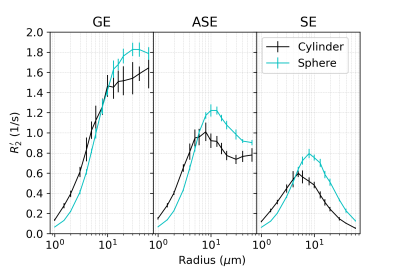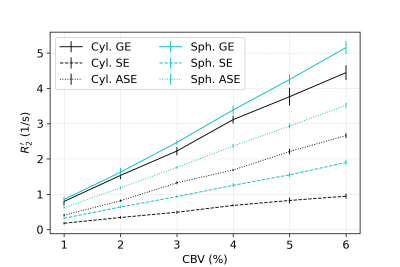Jacob Chausse1, Avery J. L. Berman2, Jonathan R. Polimeni2, and J. Jean Chen1,3
1Rotman Research Institute, Baycrest Health Sciences, North York, ON, Canada, 2A. A. Martinos Center for Biomedical Imaging, Harvard Medical School, Massachusetts General Hospital, Boston, MA, United States, 3Department of Medical Biophysics, University of Toronto, Toronto, ON, Canada
1Rotman Research Institute, Baycrest Health Sciences, North York, ON, Canada, 2A. A. Martinos Center for Biomedical Imaging, Harvard Medical School, Massachusetts General Hospital, Boston, MA, United States, 3Department of Medical Biophysics, University of Toronto, Toronto, ON, Canada
We demonstrate that microspherical perturbers exhibit a slightly exaggerated version of the cylindrical R2’ dependence on perturber radius, CBV and Y when using a cylindrical perturber model. Nonetheless, spherical perturbers can indeed approximate the behaviour of infinite cylinders.

